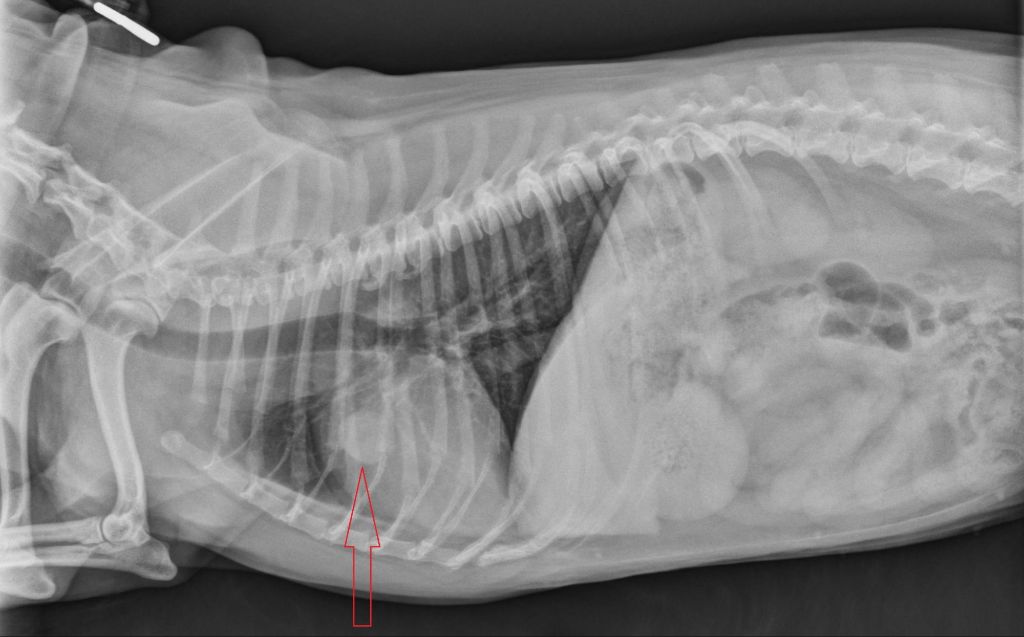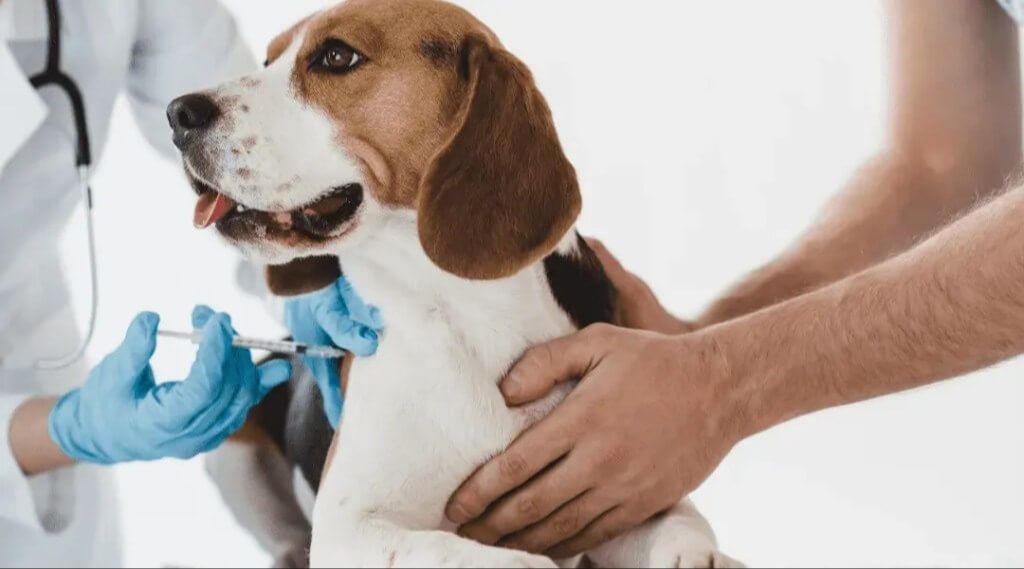Introduction
The most common reasons a dog may need an x-ray of their chest or lungs include breathing problems, persistent cough, pneumonia, cancer, heart problems, and trauma. An x-ray provides important diagnostic information that allows the veterinarian to evaluate the lungs, heart, airways, and other structures in the chest.
Chest x-rays are a crucial tool for determining the underlying cause of respiratory signs. They allow veterinarians to visualize the lungs, heart, bronchial tubes, lymph nodes, and chest wall for evidence of disease, infections, fluid buildup, tumors, fractures, foreign objects, and more. X-rays can pinpoint issues that may be difficult to detect on physical exam alone.
Some key things veterinarians look for on chest x-rays include pneumonia, lung cancer, heart enlargement, fluid around the lungs, airway obstruction, and rib fractures. The x-rays provide valuable insight into both acute and chronic lung and heart conditions in dogs.
Getting an X-Ray
The process of getting an x-ray for your dog is relatively quick and straightforward. When you arrive at the vet’s office or animal hospital, the vet will first do a physical examination of your dog to determine if an x-ray is necessary. If so, they will explain the process and take your dog to the x-ray room.
For the actual x-ray procedure, most vets use digital radiography which produces the x-ray images instantly. Your dog will be positioned on the x-ray table in different positions depending on which area needs to be imaged – for example on their back for a chest x-ray. The vet or veterinary technician will then step behind a shielded area while the x-ray image is taken, which only takes a few seconds. Your dog just has to stay still which is sometimes easier said than done! But the staff is trained to work quickly and get the images needed.
In terms of preparation, no sedation or fasting is required prior to a regular diagnostic x-ray. The exception is if your dog is getting an x-ray with contrast dye, in which case fasting may be needed. Otherwise, you can feed your dog normally before coming in for the x-ray. Just be prepared to keep your dog calm and stationary for a few minutes while the images are being taken. According to this article, the entire x-ray process typically takes about 10 minutes from start to finish.
Reading the X-Ray
When vets review chest x-rays of dogs, they are looking for any abnormalities or problems that may be present. They compare the x-ray to what is considered normal for a dog’s thoracic anatomy. According to sources, there are some key things vets look for:

The lungs should appear mostly black on the radiograph with a clear distinction between the lung tissue and the surrounding lighter air-filled space. The diaphragm, heart, major vessels, and bones of the chest such as ribs and spine should all be visible and have proper positioning and appearance (source).
The trachea, heart, and vessels should have regular contours. The cardiac silhouette should not appear enlarged or distorted. The bronchi and pulmonary vessels should be faintly visible extending from the hilus into the peripheral lung fields (source).
Abnormal findings on x-rays may include an enlarged cardiac silhouette, irregular pulmonary patterns, pleural effusion, masses, increased opacity, or evidence of collapsed lungs. The vet will analyze the location, shape, size, and density of any anomalies to help determine their cause and guide treatment.
Common Abnormal Findings
Some of the most common abnormal findings that can be seen on a dog’s chest x-ray include:
Pneumonia
Pneumonia shows up on x-rays as an increased opacity or cloudiness in the lungs. It is often caused by a bacterial, viral, or fungal infection (source). Symptoms include coughing, fever, and breathing difficulties. Pneumonia can usually be treated with antibiotics and other medications. Prompt treatment is important to prevent complications.
Lung Tumors

Lung tumors may appear as solitary masses or as diffuse increased opacity through the lungs. Primary lung tumors like adenocarcinoma are rare in dogs, but metastatic tumors spreading from other areas of the body are more common. Coughing, difficulty breathing, and weight loss can occur. Treatment depends on the type and location of the tumor, and may include surgery, chemotherapy, or radiation.
Enlarged Heart
An enlarged heart, or cardiomegaly, shows up on x-rays as an abnormally large cardiac silhouette. It is often caused by underlying heart disease like dilated cardiomyopathy or valvular disease. Symptoms include exercise intolerance, coughing, and fainting. Medications can help manage heart failure, but there is no cure (source).
Treatment Options
Treatment for pneumonia and other conditions found on x-rays will depend on the specific cause and severity. Some common treatment options may include:
Antibiotics – Bacterial pneumonias are often treated with antibiotics like doxycycline, clindamycin, or enrofloxacin for 7-21 days. Antibiotics can be given orally or by injection (source).
Cough suppressants – Drugs like hydrocodone or butorphanol can help suppress coughing and make dogs more comfortable.
Fluids – IV fluids help prevent dehydration and can improve blood oxygen levels.
Oxygen therapy – Severe pneumonia cases may require oxygen supplementation to improve breathing.
Drainage and surgery – Abscesses ormasses may need surgical draining or removal.
Medications like bronchodilators or steroids may also be used for certain lung conditions like chronic bronchitis. With appropriate treatment guided by x-ray findings, many dogs can make a full recovery from pneumonia and other respiratory diseases.

Recovery and Follow-Up
The typical recovery period for a dog with pneumonia is around 3-5 weeks, but it can take anywhere from a few weeks to several months for a complete recovery depending on the severity of the pneumonia and how the dog responds to treatment (Pneumonia in Dogs – Falls Road Animal Hospital, 2021).
Most dogs will show improvement within 3-7 days of starting antibiotic treatment, but antibiotics are usually continued for a minimum of 4 weeks to fully treat the pneumonia (Pneumonia in Dogs – Matthews Carolina Veterinary Hospital, 2021). Some dogs may need to be on antibiotics for 6-8 weeks if the pneumonia is severe.
Your veterinarian will likely want to take follow-up chest x-rays after 2-3 weeks of treatment to ensure the pneumonia is clearing as expected. Additional x-rays may be recommended throughout the course of treatment to monitor progress. Dogs with severe pneumonia or complications may need more frequent x-rays during recovery (Pneumonia in Dogs – WebMD, 2021).
Once antibiotic treatment is completed, your vet will recheck your dog and may recommend additional x-rays to confirm the lungs have fully healed before discontinuing medications and releasing your dog from medical care.
Caring for Your Dog
There are a few things you can do to care for your dog before and after an x-ray procedure.
Before the x-ray, make sure your dog’s fur is clean and free of any topical medications or ointments, as these can interfere with image quality. You may need to trim the fur around the area being x-rayed. It’s also a good idea not to feed your dog for 6-12 hours before the x-ray to prevent vomiting during the procedure if anesthesia is used.
After the x-ray, your dog may be groggy and sleepy from the anesthesia. Provide a comfortable resting place and avoid strenuous activity or exercise. Give small, bland meals for the next 12-24 hours to avoid stomach upset. Limit food and treats if your dog had an x-ray with barium contrast, as this can cause constipation.
If your dog was diagnosed with a condition from the x-ray, follow all discharge instructions from your veterinarian. This may include restricting activity, administering medications as directed, or implementing dietary changes. Make sure your dog has access to fresh water at all times during recovery.
Monitor your dog closely in the days after the x-ray and call your vet if you notice lethargy, vomiting, diarrhea or other concerning symptoms. With proper aftercare, your pup should make a full recovery.
Costs
The typical cost of a chest x-ray for a dog ranges from $75 to $250 depending on your location and veterinarian office. At a low-cost clinic or animal shelter, an x-ray may cost as little as $75. Most general veterinary clinics charge between $100 and $250. Specialty and emergency vet offices often charge from $200 up to $400 or more.
The x-ray price usually includes the radiology consultation, interpretation of the images, and providing copies of the images. It does not include sedation or anesthesia if needed to keep your dog still for the x-rays. That would be an additional $50 to $150 typically. Some vets may offer package deals bundling the x-rays and any required sedation.
Many pet insurance plans cover diagnostic imaging like x-rays after you meet your annual deductible, often reimbursing you 70% to 90% of the cost. On average, pet insurance costs $30 to $100 per month depending on the breed, age, and health of your dog as well as the plan type and coverage details.
Prevention
Preventing respiratory illnesses like pneumonia in dogs starts with maintaining their overall health and wellness. Annual wellness exams allow your veterinarian to assess your dog’s risk factors and make vaccination recommendations tailored to their lifestyle and exposure risks. Some key vaccinations that can help prevent pneumonia include canine cough, parainfluenza, adenovirus, and bordetella.
You can also take steps at home to reduce your dog’s chances of developing pneumonia. Avoid exposing them to irritants like cigarette smoke, dust, and chemical cleaners or sprays. Make sure your home has good ventilation and air filtration. Limit their contact with other dogs at boarding facilities, parks, or training classes. Practice good hygiene like washing your hands before and after interacting with your dog. Keep their living space clean, dry, and free of mold or mildew. And monitor your dog for any signs of respiratory illness so you can seek prompt veterinary care.
While not every case can be prevented, focusing on wellness, vaccination, and reducing risk factors can significantly lower your dog’s chances of developing a serious respiratory infection like pneumonia.
When to Get an X-Ray

There are certain symptoms that may indicate the need for a chest x-ray for your dog. These include:
- Coughing
- Wheezing or other breathing difficulties
- Exercise intolerance
- Collapsing
- Heart murmur
- Unexplained weight loss
If your dog is exhibiting any of these symptoms, the first step is to take them to the vet for an initial examination. The vet will listen to their heart and lungs, and may run other diagnostic tests. If a heart or lung condition is suspected, the vet will likely recommend getting chest x-rays as the next step to identify the underlying issue.
X-rays allow the vet to see the heart, major blood vessels, lungs, airways, and lymph nodes in the chest cavity. This imaging can reveal enlargement or masses, fluid accumulation, pneumonia, or other abnormalities that may be contributing to your dog’s symptoms. With this information, the vet can make an accurate diagnosis and determine the right treatment plan.
In summary, schedule a chest x-ray for your dog if recommended by your vet after an initial exam for breathing issues, cough, heart murmur, or other concerning symptoms. The x-rays will provide vital information to get your dog the proper care and treatment they need.
